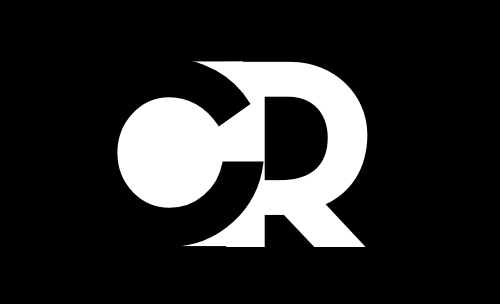How To Invest In Index Funds With $100 Or Less?

Investing in index funds is one of the simplest and most effective ways to grow your money over time even if you’re starting with just $100 or less. These funds offer instant diversification by tracking a market index (like the S&P 500), making them a low-cost, low-maintenance option for beginners. The best part? You don’t need a fortune to get started. With the rise of fractional shares and commission-free trading platforms, investing small amounts has never been easier.
This guide will walk you through the entire process from choosing the right index fund to setting up your account and making your first investment. Whether you’re a student, a young professional, or simply looking to start small, you’ll learn how to put your money to work with minimal upfront costs. By the end, you’ll see that building wealth doesn’t require huge sums just smart, consistent choices.
Why Invest in Index Funds with $100 or Less?
Many people believe investing is only for the wealthy that you need thousands of dollars to get started. But thanks to modern investing platforms and fractional shares, you can begin building wealth with just $100 or even less. Index funds, in particular, are one of the best ways for small investors to grow their money steadily over time. Here’s why:
1. Low Barrier to Entry
Unlike real estate or actively managed funds, index funds allow you to start with minimal cash. Many brokerages now offer fractional shares, meaning you can buy a portion of an expensive stock or fund with as little as $5 or $10. This makes it possible to invest in top-performing index funds (like those tracking the S&P 500) without needing hundreds upfront.
2. Built-In Diversification
Index funds spread your money across hundreds (or thousands) of stocks or bonds in a single purchase. For example, an S&P 500 index fund gives you ownership in 500 of the largest U.S. companies reducing risk compared to buying individual stocks. Even with just $100, you gain exposure to a broad slice of the market.
3. Low Costs = More Growth
Most index funds have low expense ratios (often below 0.10%), meaning more of your money stays invested instead of being eaten up by fees. Over time, these savings compound, helping even small investments grow significantly.
4. Hands-Off Investing
Index funds follow a passive investing strategy, automatically adjusting to match their benchmark index. You don’t need to pick stocks or time the market just invest consistently and let the market’s long-term growth work for you.
5. The Power of Compound Growth
Even small amounts can grow substantially over time. For example:
- $100 invested monthly at a 7% average annual return becomes $11,600+ in 10 years.
- The same investment grows to $50,000+ in 20 years all from just $100 at a time.
How to Choose the Right Index Fund?
Not all index funds are created equal some are better suited for small investors than others. Since you’re starting with $100 or less, you’ll want a fund that’s low-cost, diversified, and easy to buy in small amounts. Here’s how to pick the right one:
1. Look for Low Expense Ratios
The expense ratio is the annual fee charged by the fund. Even small differences add up over time:
- Good: Under 0.10% (e.g., Vanguard S&P 500 ETF – VOO: 0.03%)
- Avoid: Anything above 0.50% (actively managed funds often charge 1% or more)
Why it matters? A 0.03% fee means you pay $0.30 per year on a $1,000 investment, while a 1% fee costs $10 annually—eating into your returns.
2. Prioritize Broad Market Index Funds
For beginners, diversification is key. The best starter funds track:
- The entire U.S. stock market (e.g., VTI, SCHB)
- The S&P 500 (e.g., VOO, SPY, IVV)
- Global stocks (e.g., VT, ACWI)
Avoid niche funds (like single-sector ETFs) until you’ve built a core portfolio.
3. Check the Minimum Investment
Some mutual funds require $1,000+ to start, but many ETFs and brokerages now allow:
- Fractional shares (buy as little as $1 worth)
- No minimums (e.g., Fidelity ZERO funds, Robinhood, M1 Finance)
Best options for $100 or less:
- Fidelity ZERO Total Market Index (FZROX) – No minimum, 0% expense ratio
- Schwab S&P 500 Index Fund (SWPPX) – $0 minimum, 0.02% fee
- Vanguard ETFs (VTI, VOO) – Buy fractional shares at most brokerages
4. ETFs vs. Mutual Funds: Which Is Better?
| Feature | ETFs (e.g., VOO, VTI) | Mutual Funds (e.g., FZROX, SWPPX) |
|---|---|---|
| Minimum Investment | Any amount (fractional shares) | Often $0–$3,000 |
| Trading | Bought/sold like stocks | Priced once daily |
| Tax Efficiency | Usually better | Slightly less efficient |
| Best For | Flexible, small investors | Hands-off, automatic investing |
For $100 or less: ETFs (with fractional shares) are usually the easiest choice.
5. Avoid These Common Pitfalls
- Chasing past performance – Just because a fund did well last year doesn’t mean it will repeat.
- Overcomplicating your portfolio – Start with 1-2 broad funds before adding more.
- Ignoring taxes in taxable accounts – ETFs are usually more tax-efficient than mutual funds.
Where to Buy Index Funds with $100 or Less?

Gone are the days when investing required thousands upfront. Today, thanks to commission-free trading, fractional shares, and low-minimum funds, you can start investing in index funds with as little as $1. But not all brokerages are equally beginner-friendly. Here’s where to buy index funds when you’re starting small:
1. Best Brokerages for Small Investments ($100 or Less)
🏆 Fidelity
- Best for: Zero-fee funds & fractional shares
- Minimum: $0 (even for mutual funds)
- Key Perks:
- Offers Fidelity ZERO funds (0% expense ratio, no minimums)
- Allows fractional shares on ETFs and stocks
- No account fees
Best Pick: FZROX (U.S. Total Market) or FNILX (S&P 500)
💰 Charles Schwab
- Best for: Low-cost index mutual funds
- Minimum: $0 for Schwab index funds
- Key Perks:
- Schwab S&P 500 Index (SWPPX) has a 0.02% fee
- Fractional shares for S&P 500 stocks (not all ETFs)
Best Pick: SWPPX or SWTSX (Total Stock Market)
📱 Robinhood / Webull / SoFi
- Best for: Mobile-first fractional investing
- Minimum: $1+
- Key Perks:
- Buy any ETF or stock in fractional shares
- Simple app interface (good for beginners)
- No commissions
Best Pick: VTI (Total Market) or VOO (S&P 500)
🔄 M1 Finance
- Best for: Automated, pie-based investing
- Minimum: $0 (but $100 to start auto-investing)
- Key Perks:
- Set up a custom “pie” of ETFs (e.g., 60% VTI, 40% VXUS)
- Automatic rebalancing
Best Pick: Build a diversified ETF portfolio
2. Can You Buy Index Funds Directly from Vanguard?
Yes, but Vanguard’s best funds often require $1,000+ minimums for mutual funds. However:
- You can buy Vanguard ETFs (VOO, VTI) commission-free at any brokerage (even with fractional shares).
- If you’re set on Vanguard, start with ETFs until you hit $1,000 for mutual funds.
3. What About Acorns or Stash?
These “micro-investing” apps let you start with $5 or less, but they have drawbacks:
- Higher fees (e.g., Acorns charges $3/month, which eats into small balances).
- Limited fund choices (you don’t get full control over your picks).
Better option: Use a real brokerage (Fidelity, Schwab, Robinhood) for true low-cost investing.
4. How to Buy Your First Index Fund (Step-by-Step)
- Open an account (Fidelity, Schwab, or Robinhood are best for small amounts).
- Deposit $100 or less (most apps allow instant transfers).
- Search for your chosen fund (e.g., VTI, FZROX, or SWPPX).
- Buy fractional shares (if needed) and confirm the purchase.
- Set up recurring investments (even $10/week adds up!).
Key Takeaway
You don’t need a lot of money to start just the right brokerage. For $100 or less:
✅ Fidelity (best for zero-fee funds)
✅ Schwab (great for low-cost mutual funds)
✅ Robinhood/Webull (easiest for fractional ETF investing)
Step-by-Step Guide to Investing Your First $100
Now that you’ve chosen your ideal index fund and brokerage, it’s time to put your money to work. Here’s exactly how to invest your first $100—from opening your account to making that first purchase.
Step 1: Open a Brokerage Account (5-10 Minutes)
- Pick your platform (Fidelity, Schwab, Robinhood, etc.—see previous section).
- Sign up (you’ll need your SSN, ID, and bank details).
- Choose the account type (for beginners, a taxable individual account is simplest).
💡 Pro Tip: If you’re saving for retirement, consider a Roth IRA (tax-free growth), but note some IRAs require $100+ to start.
Step 2: Fund Your Account (Instant or 1-3 Business Days)
- Bank transfer: Link your checking account and deposit $100.
- Instant deposits: Apps like Robinhood let you invest immediately (up to a limit).
- No fees: Most brokerages don’t charge for deposits.
⚠️ Watch out for:
- Brokerages that require a minimum (e.g., Vanguard mutual funds need $1,000+).
- Transfer delays (some banks take 1-3 days).
Step 3: Search for Your Chosen Index Fund
- ETFs (VTI, VOO, etc.): Search the ticker symbol.
- Mutual funds (FZROX, SWPPX, etc.): Search the fund name.
🔍 Example (Fidelity):
- Go to “Trade” → “Stocks/ETFs.”
- Type “FZROX” (for Fidelity ZERO Total Market).
- Click “Buy.”
Step 4: Place Your Order (Fractional Shares or Full Shares)
Since $100 isn’t enough for some ETFs (e.g., SPY is ~$500/share), use fractional investing if available:
- Enter dollar amount (e.g., “$100”) instead of shares.
- Select “Market Order” (buys at current price).
- Review & confirm (check for fees—most are $0 now).
📊 Example Trade:
- Fund: VTI (Vanguard Total Stock Market ETF)
- Share Price: $250
- Your Buy: $100 → You own 0.4 shares (fractional).
Step 5: Set Up Recurring Investments (Optional but Recommended)
To build wealth automatically:
- Find “Recurring Investments” in your brokerage settings.
- Schedule weekly/monthly buys (e.g., “$25 every Friday”).
- Choose the same fund (like VTI or FZROX).
Final Thoughts
Investing in index funds with just $100 or less is one of the smartest, simplest ways to begin building long-term wealth no expertise or fortune required. By starting early, staying consistent, and letting compound growth work its magic, even small contributions can grow into life-changing sums over time. The key is to begin now, resist the urge to overcomplicate things, and trust in the market’s historical resilience. Whether you invest in an S&P 500 fund, a total market ETF, or a zero-fee index fund, the most important step is simply getting started. Your future self will look back and thank you for taking action today. So deposit that $100, hit “buy,” and let time do the rest. Happy investing!





![Carx Street Guide [Tips for Beginners to Dominate Streets]](https://downloadcarxstreet.com/wp-content/uploads/2024/06/Carx-Street-Guide-Tips-for-Beginners-to-Dominate-Streets-768x480.webp)
